We’ve all experienced the frustration of chasing after a horse that doesn’t want to be caught. Imagine how nice it would be to just call your horse and they come to you.
Instead of spending an hour trying to outsmart your horse or bribe them with grain only to waste much of your time.
It’s not only time-consuming but can also be a safety issue, and it makes things difficult for everyone especially if you always need help to catch your horse.
By training your horse to come when called, you can avoid wasting time and energy on unnecessary chasing and enjoy a smoother, more rewarding experience with your equine buddy.
In this guide, I am going to explain the importance of catching and training your horse, building trust and positive associations, and practical tips for approaching your horse with caution and calmness.
With some simple techniques and patience, you can transform your interactions with your horse, making them more enjoyable and efficient.
| Key Points Covered |
|---|
| The importance of catching and training your horse |
| Building trust and positive associations |
| Creating positive experiences for your horse |
| Training your horse in an enclosed area |
| Approaching your horse cautiously and calmly |
Table Of Contents
- Essential Equipment For Catching Your Horse
- How To Train A Horse To Come With Positive Experiences
- Approaching Your Horse In The Field
- Using Voice Commands To Train Your Horse To Come
- Training in an Enclosed Area For More Efficiency
- Encouraging Your Horse to Come Closer
- Lowering the Whip- What It Means To Your Horse
- The Path to Success Lies In Your Patience and Consistency
- Reinforcing The Positive Associations With Being Caught
- Troubleshooting Common Issues With Catching Horses
- Conclusion: Celebrating Your Success and Strengthening Your Bond
- FAQs About Training Your Horse To Be Caught Easily and Come When Called
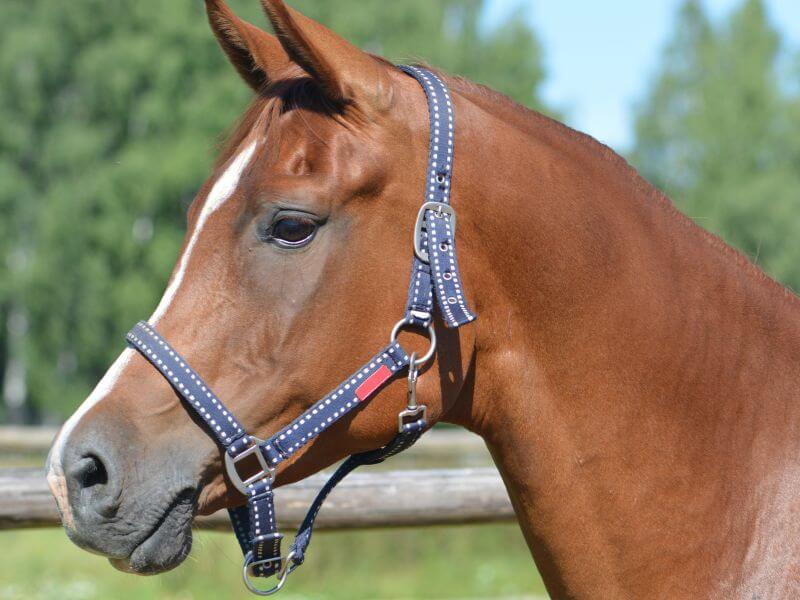
Essential Equipment For Catching Your Horse
Before we start, let’s make sure you’re equipped with the right tools. Just like any other task, having the proper gear can make a world of difference when trying to catch horses.
In this section, we’ll discuss what you’ll need to get started: a comfortable halter, a reliable lead rope, and an enticing bucket with sweet feed or horse treats.
| Equipment | Features | Tips |
| Halter | Adjustable, soft, durable material (e.g., nylon, leather, rope) | Ensure 3-4 fingers width at throatlatch, cheekpieces parallel to cheekbones, no pressure on sensitive areas |
| Lead Rope | 10-12 feet length, easy to clip on and off | Hold six inches from halter, avoid dragging excess lead on the ground |
| Bucket | Filled with sweet feed or horse treats | Shake bucket, call horse’s name, reward when the horse approaches |
Choosing the Right Halter
The halter is your best friend when it comes to catching a horse.
You want something that’s easy to put on and take off, without causing discomfort to your horse.
Look for a halter that’s adjustable and made from soft, durable material such as nylon, leather, or rope.
Make sure the throat latch allows for 3-4 fingers width, ensuring your horse can breathe and swallow properly.
Double-check the fit by making sure the cheekpieces run parallel to your horse’s cheekbones and that the hardware isn’t pressing into any sensitive areas.
A breakaway halter can be an added safety feature to consider, especially if you decide to keep a halter on your horse when they are turned out.
Lead Rope Selection
A good lead rope is essential for maintaining control while catching your horse. Look for a rope that’s easy to clip on and off.
Aim for a length of about 10-12 feet, giving you enough room to maneuver without getting tangled up.
When holding the lead, ensure you’re about six inches from the halter and that the excess lead doesn’t drag on the ground where it may become entangled in your legs or the horse’s legs.
Remember never wrap the lead rope around your hand, in the event your horse spooks and jerks the rope or tries to run off.
This can really hurt your hand or worse and you could even possibly get dragged.
Using a Bucket and Sweet Feed or Horse Treats
A bucket filled with sweet feed or horse treats can work wonders in attracting your horse’s attention.
The tasty treat will entice your horse to come closer, making it easier for you to approach and catch them.
Though it doesn’t work with all horses. Start by shaking the bucket and calling the horse’s name, then reward the horse with treats or grain when it comes to you.
Just remember not to overdo it with the treats – you want your horse to learn to trust you, not just be lured in and bribed by food.
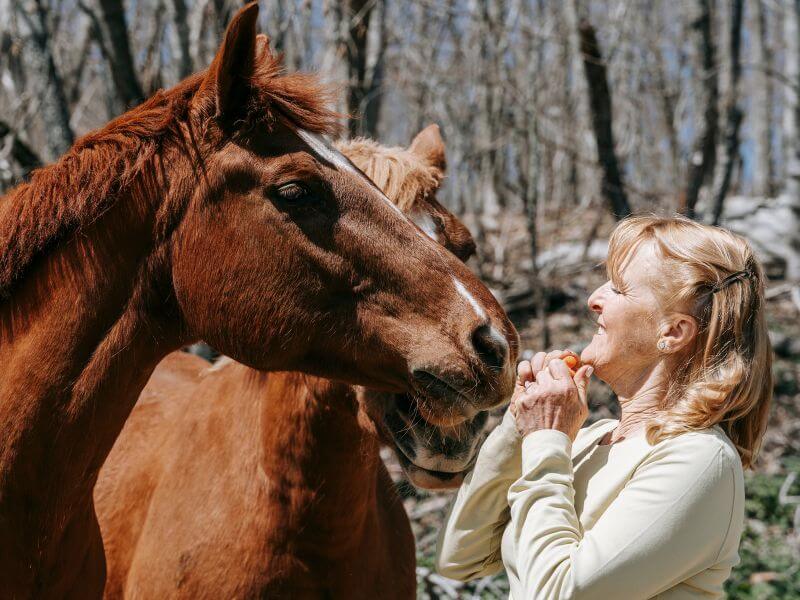
How To Train A Horse To Come With Positive Experiences
It’s time to begin developing a good relationship with your horse now that you’re prepared. I
t’s crucial to provide a secure and welcoming atmosphere for your horse around you.
We’ll talk about letting your horse approach you, how to visit without capturing it, and the advantages of scratching, massaging, and grooming your horse in this part.
| Activity | Purpose | Tips |
| Visiting the pasture without catching | Build trust by spending time without pressure | Engage in non-horse-related activities in the pasture or paddock |
| Allowing the horse to approach you | Let the horse set the pace | Be patient, stay calm, and avoid sudden movements |
| Scratching, massaging, and grooming | Reinforce bond and create positive associations | Establish a routine, reward with treats, and use halter/lead as a massager |
Visiting the Pasture Without Catching
One of the most crucial steps in creating a trusting bond with your horse is simply spending time with them without any pressure to catch them.
Just hang out in the pasture or paddock, minding your own business, and engaging in activities that don’t involve approaching the horse, like cleaning or organizing the stable.
Your horse will begin to see that you’re not always there to catch them and may become more curious about you.
Allowing the Horse to Approach You
As you spend time in the pasture, let your horse approach you on their terms.
This can be a slow process, so be patient. You might notice your horse coming closer and sniffing you out of curiosity.
When this happens, stay calm and avoid sudden movements.
If the horse is not interested in approaching you, try walking away and see if it follows you. Your horse is learning that you’re not a threat.
The Benefits of Scratching, Massaging, and Grooming
Once you’ve established trust, you can start to engage in activities that your horse enjoys, such as scratching, massaging, and grooming.
Establish a routine around catching all of your horses by calling them from the pasture into a corral using a consistent signal, like a whistle, and rewarding them for coming.
Catch the most willing horse first, giving them a scratch or a treat, then work your way through the horses until you reach the one you want.
Create a positive association with your approach by going out to your horse with enough food or treats to do 5 to 10 repetitions.
If your horse allows you to approach without a halter, hand-feed them.
Make coming to you a pleasant experience by rubbing all over their body with the rope halter and lead, using it as a massager.
These activities not only help your horse feel good, but they also reinforce your bond and make your horse more likely to come when called.
Remember, a happy horse is more likely to cooperate!
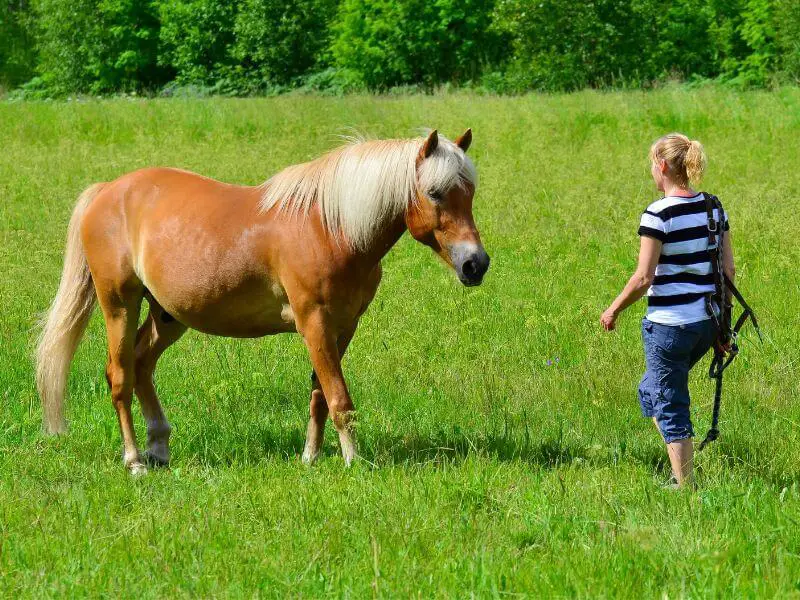
Approaching Your Horse In The Field
Building trust and achieving cooperation from your horse depend on how you approach them.
Let’s go over how to approach your horse with caution and composure in the next section.
We’ll also cover how to avoid making direct eye contact with your horse and how to identify the best approach angles.
| Aspect | Key Points | Tips |
| Cautious and Calm Approaches | Keep a relaxed posture and maintain an even pace | Speak in a soothing voice and avoid sudden movements |
| Avoiding Direct Eye Contact | Don’t stare directly into the horse’s eyes | Focus on the shoulder or neck area instead |
| Ideal Approach Angles | Approach from the front at an angle | Aim for the shoulder or neck, avoiding direct front or rear approaches |
Cautious and Calm Approaches
When approaching your horse, it’s important to remain calm and collected.
Horses can easily sense your energy, so if you’re nervous or agitated, they’re likely to pick up on it.
Move confidently and slowly towards your horse, walking and never running.
Keep an even pace, and speak to the horse in a soothing voice.
Don’t make any sudden movements or loud noises that might startle them.
Importance of Avoiding Direct Eye Contact
Direct eye contact can be perceived as threatening by horses.
Instead, keep your gaze soft and focus on their shoulder or neck area.
This will help your horse feel more at ease and less likely to see you as a potential threat.
The Ideal Approach Angles: Shoulder or Neck
When approaching your horse, aim for the shoulder or neck area, approaching from the front and at an angle, never directly from the rear when you have the option.
These are considered “safe zones” and will help you avoid spooking your horse.
Avoid approaching from the direct front or back, as these angles can make it difficult for the horse to see you and may trigger their flight response.
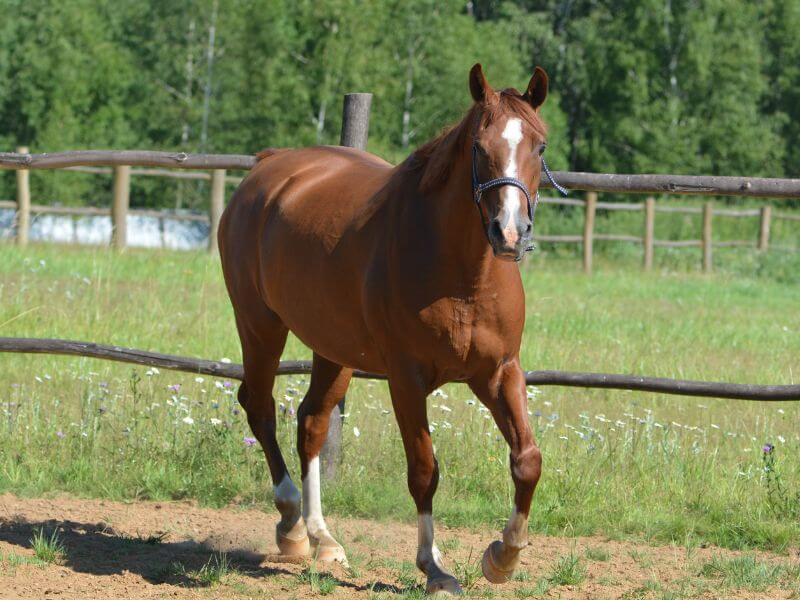
Using Voice Commands To Train Your Horse To Come
Effectively using your voice can help you teach your horse to come when called. We’ll talk about calling your horse by name, giving them praise, and building trust using voice signals in this part.
| Key Point | Tips and Examples |
| Calling your horse by name or cue | Choose a short word or loud whistle; avoid using the horse’s name as a cue. |
| Praising your horse | Use a soothing voice, clicker, and treats as positive reinforcement. |
| Establishing trust through vocal cues | Use short, easy-to-understand words, and be consistent in your communication. |
Calling Your Horse by Name or Cue
Horses can recognize their own names, just like people can.
Instead of merely calling your horse by name, you can choose a special cue, such as a brief phrase or a loud whistle.
This can clear up any confusion and make your horse’s responses more reliable. Use the selected cue to summon your horse, and speak clearly, firmly, and amiably.
They will be better able to connect the cue with satisfying memories as a result, increasing the likelihood to answer your call.
Praising Your Horse
When your horse accepts your vocal cues, make sure to give them praise in a soothing tone while using kind and encouraging words.
Additionally, you may use a clicker and treats as positive reinforcement for responding to the chosen cue or their name.
This will encourage them to keep connected to you by reinforcing their positive behaviors.
Establishing Trust Through Vocal Cues
As you consistently use your voice to communicate with your horse, they’ll begin to trust you more and understand your intentions.
Use short, easy-to-understand words, such as “Walk!”, “Trot!”, “Canter!”, “Gallop!”, “Back!”, “Easy!”, “Whoa!”, “Stand!”, “Good boy/girl!”, “Wait!”, “Over!”, and “Quit!”.
Over time, your horse will learn to associate your voice with safety and comfort, which will make catching and calling them much easier.
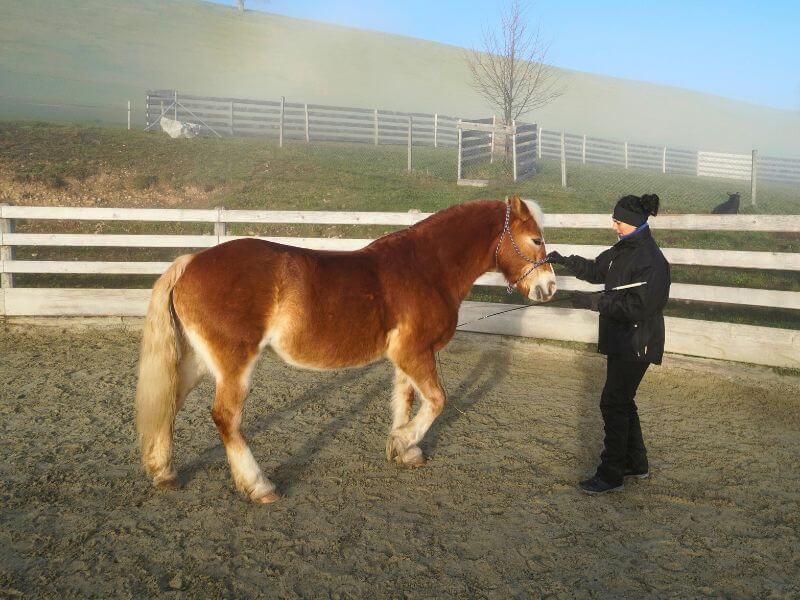
Training in an Enclosed Area For More Efficiency
Having a safe, contained space to train your horse in is important.
Let’s get into why an enclosed space is vital, how to use a lunge whip, and how to convince your horse to move forward in this next part.
| Tips |
| Choose an enclosed space with no hazards |
| Introduce the lunge whip gently |
| Cue your horse consistently and with clear direction |
| Praise your horse for responding correctly |
Why an Enclosed Space is Necessary
An enclosed space, such as a round pen or small paddock, is essential for several reasons:
- It’s like a safe space for you and your horse to work on your skills and boost their confidence.
- It provides enough space for your horse to trot but not so much that they become overwhelmed and try to run away.
- This makes sure that if your horse tries to leave the training area, there are no obstacles they may get caught up in.
Introducing the Lunge Whip
A lunge whip can be a helpful tool for cueing your horse to move forward if they try to avoid you.
When introducing the lunge whip:
- Hold it in your hand and tap it on the ground to familiarize your horse with the sound.
- Gradually move the whip closer to your horse’s body but be careful not to touch them with the whip.
- Use the whip as a gentle cue, not as a punishment. The goal is to guide your horse, not scare them.
Cueing Your Horse to Move Forward
To cue your horse to move forward, follow these steps:
- Use a kissing sound or a vocal cue to encourage your horse to move.
- Point with your hand or whip in the direction you want your horse to go.
- Position yourself so that you’re facing their shoulder, maintaining a safe distance.
- Be consistent with your cues to help your horse understand what you want them to do.
- Praise your horse when they respond to your cues.
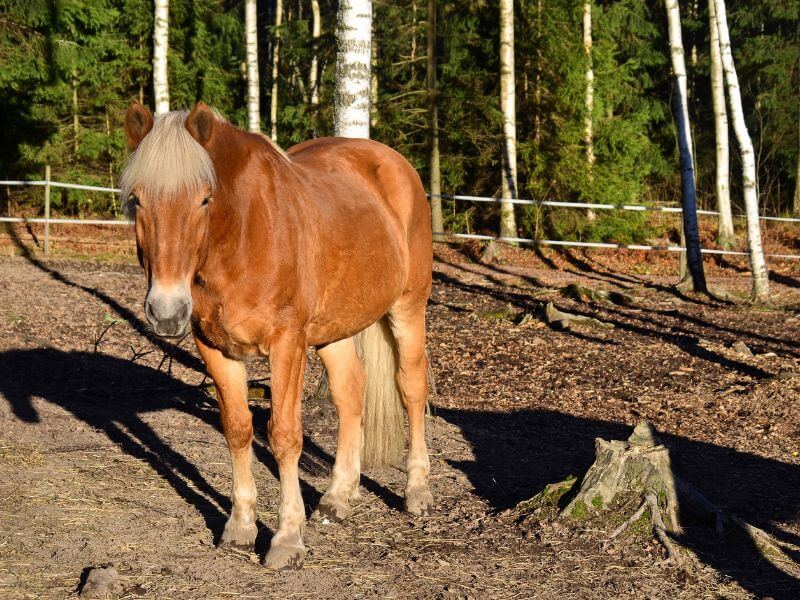
Encouraging Your Horse to Come Closer
After getting your horse to go forward, you should ask it to approach you.
Here we’ll discuss about welcoming your horse by lowering the whip, utilizing the bucket or halter, and rewarding good behavior with treats.
| Tips |
| Lower the whip to make your horse feel comfortable |
| Use a bucket or halter as an invitation |
| Reward your horse with feed or pats for positive reinforcement |
Lowering the Whip- What It Means To Your Horse
Lowering the whip can help your horse feel more comfortable and less threatened:
- When your horse stops and looks at you, lower the whip to signal that they’ve done well and that you’d like them to come closer.
- Keep your body language relaxed and inviting as you wait for your horse to take the next step.
- Any whip motion should be sideways, not up and down.
Using the Bucket or Halter as an Invitation
Using a bucket or halter as an invitation can help encourage your horse to come closer:
- Hold out the bucket of sweet feed or the halter as an invitation for your horse to come closer.
- Keep your movements slow and deliberate, making it clear that you’re offering something positive.
- Shake the bucket or hold the halter out to your horse.
Rewarding with Feed or Pats
Rewarding with feed or pats can help reinforce positive behavior:
- When your horse allows you to catch them, reward them with feed or a pat.
- This positive reinforcement will help your horse learn that being caught is a good thing, and they’ll be more likely to cooperate in the future.
- Praise your horse and give it a treat when it allows you to catch it.
Remember, consistency is key – always reward your horse for a job well done.
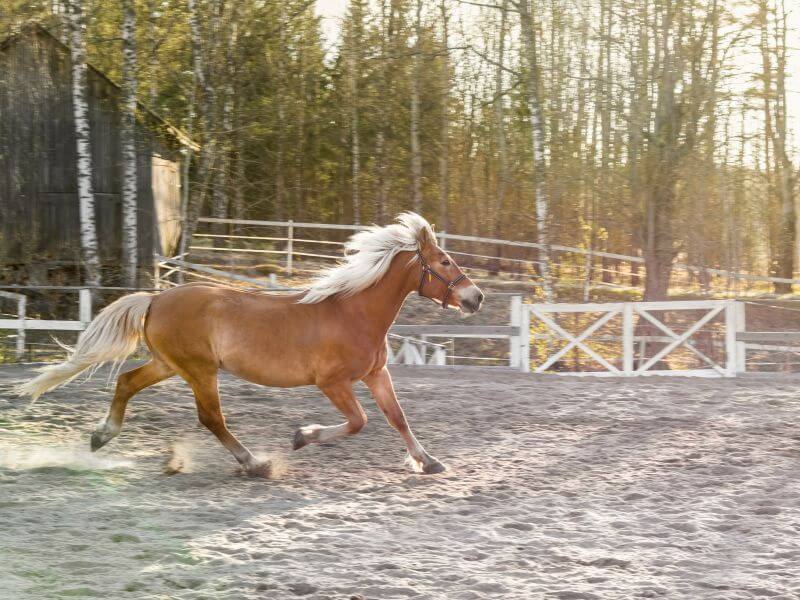
The Path to Success Lies In Your Patience and Consistency
Training your horse to be caught and come when called requires consistent effort and patience.
In this section, we’ll discuss the importance of daily practice, gradual progress through repetition, and avoiding food bribes before catching.
| Tips |
| Engage in daily practice to establish a routine and build trust |
| Make gradual progress through consistent repetition |
| Avoid using food bribes before catching your horse |
The Importance of Daily Practice
Daily practice is crucial to establish a routine and build trust between you and your horse:
- Practice with your horse on catching and calling exercises several times a day, even if it’s just for a few minutes at a time.
- A daily workout benefits your horse in many ways, such as increasing stamina and endurance, improving functioning of heart and lungs, and aiding motility of the digestive tract.
Gradual Progress Through Repetition
Gradual progress through repetition is necessary to help your horse become comfortable with being caught.
Consistency is key in every interaction with your horse:
- Start by using voice commands and calling your horse by name to establish trust.
- Praising your horse can help reinforce positive behavior.
- Establishing trust through vocal cues can also help encourage your horse to come closer.
Avoiding Food Bribes Before Catching
Avoid using food bribes before catching your horse as it can create a negative association with being caught:
- Spend time with your horse that doesn’t involve any negative experiences to build a positive relationship.
- Focus on building trust and positive associations with the act of being caught.
Remember, it takes time and repetition for your horse to fully understand what you’re asking of them.
Be patient, and celebrate even the smallest victories along the way.
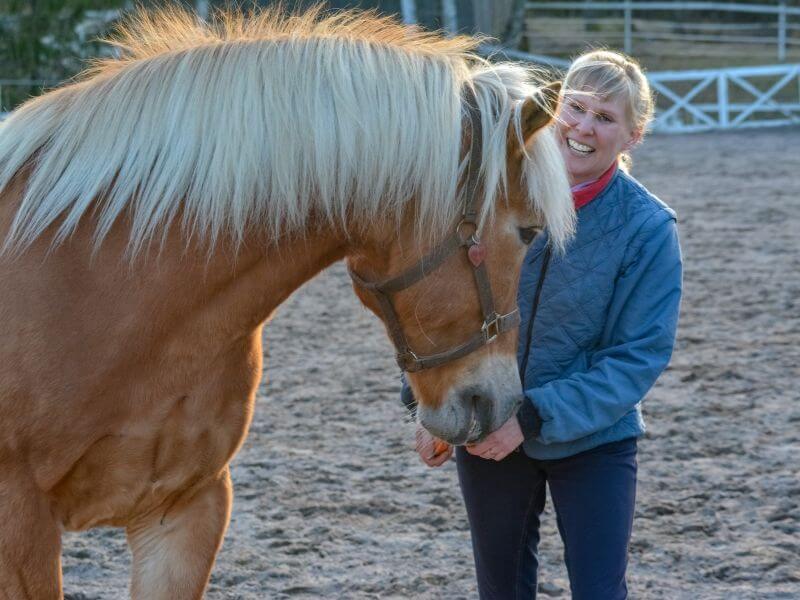
Reinforcing The Positive Associations With Being Caught
Maintaining a balance between pleasant and unpleasant experiences is crucial for reinforcing positive associations with being caught and called.
In this section, we’ll discuss balancing work and play, catching your horse for various reasons, and the impact of consistency on trust.
| Tips |
| Balance pleasant and unpleasant experiences |
| Catch your horse for various reasons, both positive and negative |
| Be consistent in your approach to build trust with your horse |
Balancing Pleasant and Unpleasant Experiences
Balancing pleasant and unpleasant experiences can help reinforce positive behavior and create a rewarding experience that encourages the desired behavior to be repeated:
- Avoid chasing or tricking your horse before catching it, as it can create negative associations.
- Catch your horse for grooming sessions, leisurely walks, or even just to give them a treat from time to time.
Catching Your Horse for Various Reasons
Catching your horse for various reasons, such as for visits from farriers and vets, can help your horse become more comfortable with being caught:
- Mix it up by catching your horse for a variety of reasons, both positive and negative.
- For example, catching your horse for grooming or feeding can help establish a positive association with being caught.
The Impact of Consistency on Trust
Consistency is important to build trust with your horse.
Spend time with your horse that doesn’t involve any negative experiences to build a positive relationship:
- Understand the situation from your horse’s point of view to help reinforce positive associations with being caught.
- Stick to your training routine and continue to reward your horse for positive behavior.
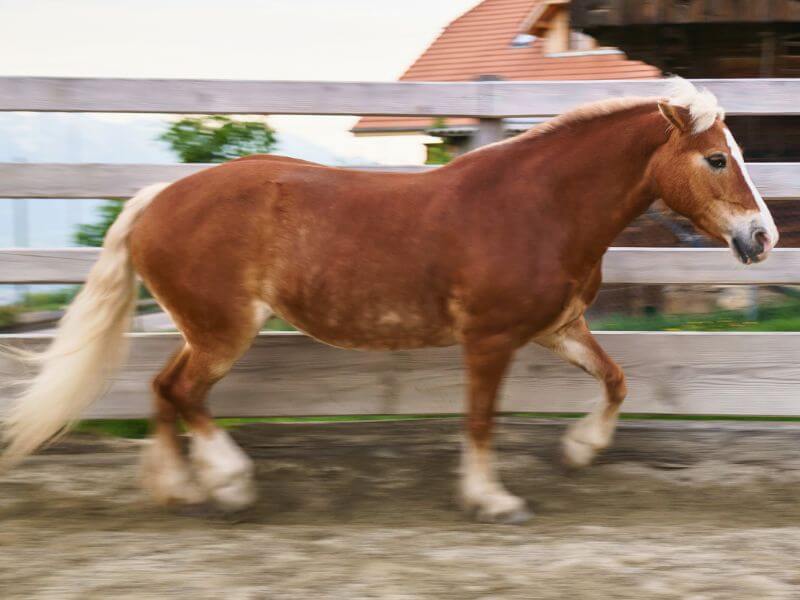
Troubleshooting Common Issues With Catching Horses
Even with consistent training and effort, you might still face some challenges when trying to catch and call your horse.
In this section, we’ll discuss how to address common issues like a hard-to-catch horse, a horse that runs away, and dealing with distractions.
| Challenges | Solutions |
| Hard-to-Catch Horse | Balance pleasant/unpleasant experiences, spend more time in the pasture, work with an experienced trainer |
| Horse That Runs Away | Catch for various reasons, understand the horse’s lifestyle, build trust and positive associations |
| Managing Distractions | Consistency in training, create a positive relationship, work in a quiet, controlled environment |
Dealing with a Hard-to-Catch Horse
Balancing pleasant and unpleasant experiences is important to help your horse associate being caught with positive experiences:
- Avoid chasing or tricking your horse before catching it, as it can create negative associations.
- Spend more time in the pasture with your horse, allowing them to approach you on their terms.
- Consider working with an experienced trainer or seeking advice from other horse owners to help you overcome this challenge.
Addressing a Horse That Runs Away
Catching your horse for various reasons, such as for visits from farriers and vets, can help your horse become more comfortable with being caught:
- Understanding your horse’s individual lifestyle and experiences can help you determine why it may want to avoid being caught.
- Work on building trust and creating positive associations with being caught.
- Be patient and consistent, and avoid chasing after your horse. Instead, focus on encouraging them to come to you using the techniques discussed in this article.
Managing Distractions
The impact of consistency on trust cannot be overstated.
Consistency in training can help establish trust between you and your horse:
- Spend time with your horse that doesn’t involve any negative experiences to build a positive relationship.
- Understand the situation from your horse’s point of view to help reinforce positive associations with being caught.
- To manage distractions, try to work with your horse in a quiet, controlled environment where you can maintain their attention. Be patient and persistent, and remember that building trust takes time.
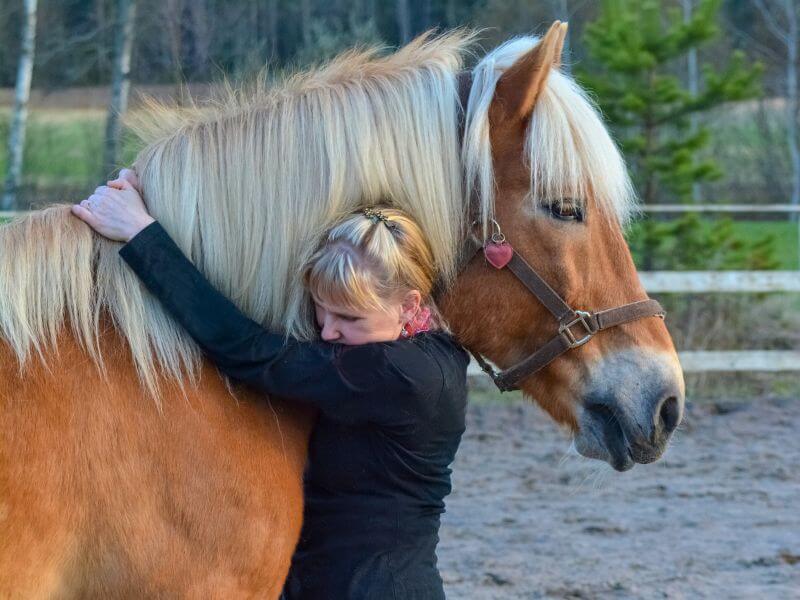
Conclusion: Celebrating Your Success and Strengthening Your Bond
Training your horse to be caught easily and come when called requires patience, consistency, and a strong bond between you and your equine companion.
Throughout this article, we discussed the importance of balancing pleasant and unpleasant experiences, catching your horse for various reasons, and maintaining consistency in your training.
We also emphasized the significance of building trust and positive associations to create a lasting relationship with your horse.
By understanding the situation from your horse’s point of view and considering why they may want to avoid being caught, you can work towards establishing a positive and trusting relationship.
By following the key principles of horse training and applying the strategies we discussed, you can make significant progress in your horse’s training journey.
Don’t forget to refer to the key takeaways table for a summary of the solutions to common challenges.
I wrote this article to provide helpful insights and practical tips for horse owners and trainers.
My goal is to help you build a strong bond with your horse and create a positive training environment that fosters growth and trust.
By applying the strategies discussed in this article, you’ll not only have a well-trained horse but also a deep and lasting connection with your equine partner.
Now it’s time to put these tips into practice and embark on your horse training journey. Be patient, consistent, and celebrate every milestone along the way.
Don’t forget to check out our other resources, like how to approach a horse, for more helpful tips and tricks.
Here’s to a happier, more trusting relationship with your horse. Happy training!
| Key Takeaways: Catching and Calling Your Horse with Confidence |
| 1. Build trust and positive associations with your horse |
| 2. Be patient and consistent in your training approach |
| 3. Balance pleasant and unpleasant experiences |
| 4. Catch your horse for various reasons |
| 5. Avoid using food bribes before catching |
| 6. Reinforce positive behavior with praise and rewards |
| 7. Address common issues like hard-to-catch or runaway horses |
| 8. Manage distractions during training sessions |
| 9. Seek advice from experienced trainers and horse owners |
| 10. Celebrate milestones and enjoy the journey |
FAQs About Training Your Horse To Be Caught Easily and Come When Called
To wrap up our discussion on training your horse to be caught and come when called, we’ve compiled a list of frequently asked questions that can provide additional guidance and insights.
How long does it typically take to train a horse to come when called?
The time it takes to train a horse to come when called can vary depending on the individual horse, your training techniques, and the amount of time you dedicate to practice.
Be patient and consistent, and remember that progress may be slow at first. With time and dedication, your horse will eventually learn to respond to your call.
My horse used to come when called, but now they’re ignoring me. What should I do?
If your horse has suddenly stopped responding to your call, it could be due to a variety of factors. Consider any recent changes in their environment, routine, or health that may be causing stress or discomfort.
It’s also important to reevaluate your training techniques to ensure you’re still providing positive reinforcement and creating pleasant associations with being caught.
Can I train more than one horse at a time to come when called?
While it is possible to train multiple horses at once, it can be more challenging to give each horse the individual attention they need to learn effectively. It’s generally best to focus on training one horse at a time, especially if you’re new to the process or working with a particularly challenging horse.
How do I train my horse to come to me without using treats or food?
While treats and food can be effective motivators, it’s essential not to rely on them too heavily.
Instead, focus on building trust and a strong bond with your horse. Use voice commands, praise, and physical touch (like pats or scratches) as rewards for good behavior.
Over time, your horse will learn to associate being caught with positive experiences, even without the promise of food.
What should I do if my horse becomes aggressive or fearful during training?
If your horse becomes aggressive or fearful during training, it’s important to take a step back and reassess your approach.
Make sure you’re using gentle, positive reinforcement techniques and not inadvertently causing your horse stress or discomfort.
If you’re unsure how to proceed, consider seeking the advice of a professional trainer or experienced horse owner who can help you identify and address the underlying issue.
By following these training techniques, you should be able to teach your horse to come when called and be caught easily, making your time with them more enjoyable.
Cheers, Kacey
P.S. Did you like this article? Gallop over to:

